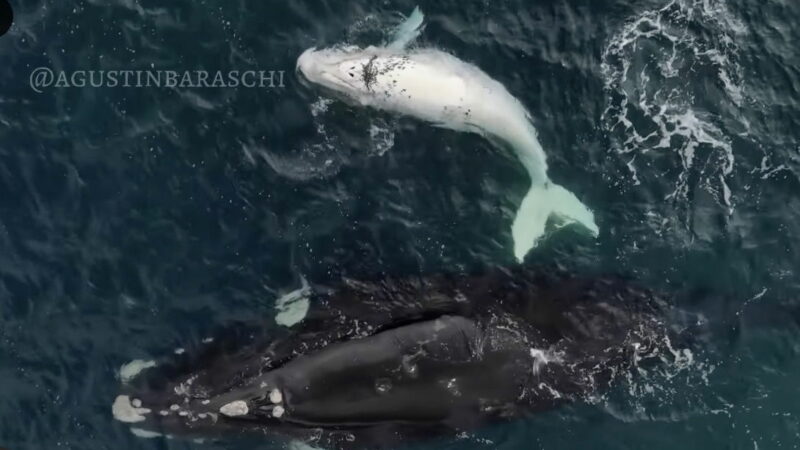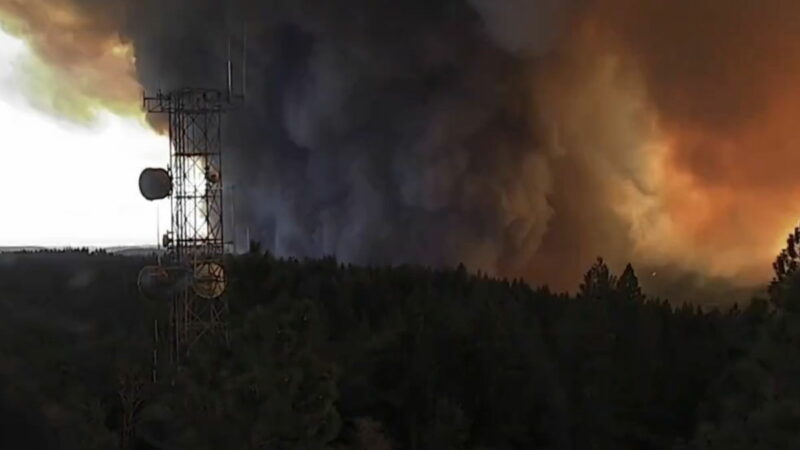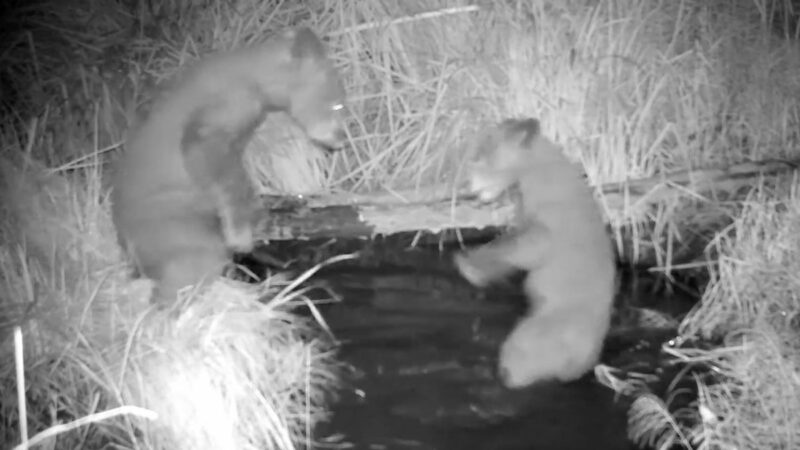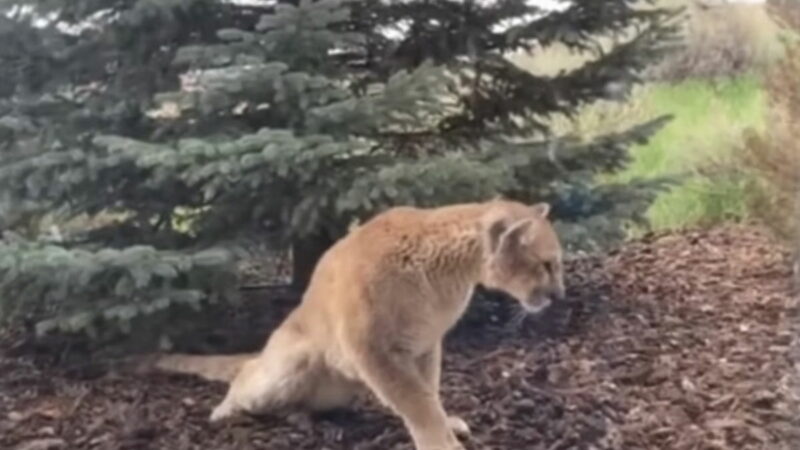Best 4-Season Tents of 2024
This is the season for epic adventures and battling weather of any kind on your backpacking trips. Whether you’re camping in snowy weather, mountaineering, backcountry skiing, snowshoeing, or going on an expedition, you will need a tent that can hold up.
Videos by Outdoors
If you’ve ever set out on a camping adventure and dealt with wet gear, sticky condensation, your tent blowing away from high winds, or frozen toes, you may need a high-quality 4-season tent.
As we enter adventure season, it’s important to make sure your tent is right for the conditions you will face. If not, you might need an update. Many 4-season tents are designed for harsh weather, but some tents are designed for use across all seasons.
The best 4-season tent is the The North Face Mountain 25. This popular high-quality tent is made for fast-changing conditions in severe weather. It’s versatile enough to have you covered in just about any situation and has some of the bonus features of more expensive tents, without the high price tag.
But that’s not all: we’ve got picks for minimalist expeditions, the best for durability, or the most versatile if you aren’t sure what kind of weather you’ll be needing your tent for. Read on to see our picks for the best 4-season tents for any adventurer in 2024.
This post contains affiliate links. Outdoors.com may earn a commission when you make a purchase through these links. Thank you for your support.
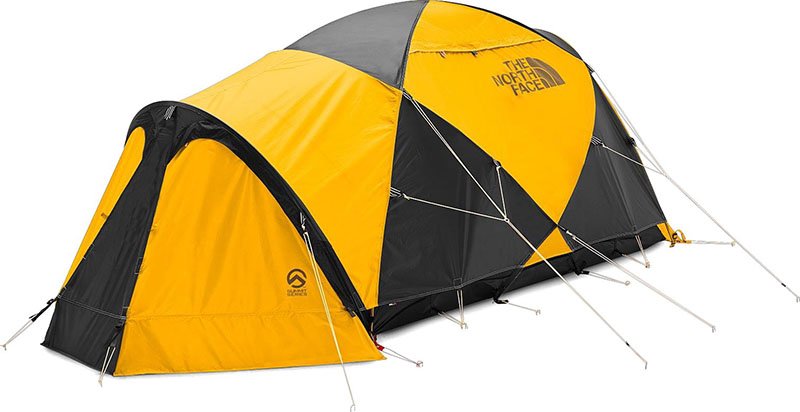
Specs:
- Floor Dimensions: 86 x 54 inches
- Minimum Trail Weight:8 lbs. 13 oz.
- Sleeping Capacity: 2 Persons
The North Face Mountain 25 is a high-quality two-person mountaineering and expedition tent.
Popular for mountaineering, The North Face is a common choice for dome tents for many climbers and guides. For the price, the tent is high value and performs well in high-altitude environments.
The North Face Mountain 25 is a double wall tent with a rain fly and a footprint. This is a great mountaineering tent for winter trips and is popular for alpine climbing trips as a basecamp tent.
It’s a bit heavy, just under 9lb, but has features to be extremely resistant to weather. Fortified fly and cold-crack tested up to -60°F, reviewers say this North Face tent holds up well against inclement weather, in a snowstorm, and in severe wind.
It shines most brightly in the harshest of conditions with high-quality construction. High-low venting stops internal condensation.
It has dual doors and a poled entry so you can set it up in many different places. It comes with DAC aluminum poles, and eight internal pockets with loops so you can dry items inside. It’s really easy to set up, which can be great especially if a storm is coming on.
For a two-person tent, The North Face offers a quite spacious tent with the bonus of the price, as it’s cheaper than many other expedition tents. Overall, it’s a great tent.
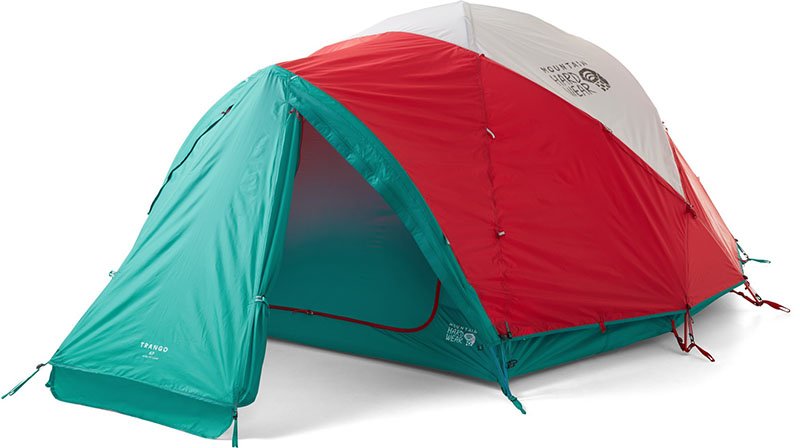
Specs:
- Floor Dimensions: 96 x 94 inches
- Sleeping Capacity: 4 Person
- Minimum Trail Weight: 11 lbs. 7.5 oz.
Made to survive heavy snow, punishing winds, and pouring rain the incredible Trango tent is a workhorse and is the best pick for basecamp tents.
Simple and straightforward to pitch, it’s specifically made for adventurers who may be caught in a snowstorm and need shelter fast. For mountaineering tents, the Mountain Hardwear Trango 4 Tent is the best.
Mountain Hardwear covers the walls of the Trango with tons of big mesh interior pockets and internal tension, so you can store your gear all over the tent and try things out. There’s even a pocket for your headlamp!
The tall peak height of 50 inches allows comfortable sitting up and there’s plenty of floor space for three campers to hang out, especially if snow camping.
This tent is incredibly durable. Almost part of the tent is rugged and reinforced.
The DAC Featherlight NSL Green poles are the toughest in the DAC catalog, the guylines attach via welded loops and lock in with sturdy metal hardware, triple-reinforced windows let light in and allow you to see conditions outside, and the internal guy system provides added strength in the worst of conditions.
This tent is a serious investment, but it’s cheaper than multiple tents and can sleep four. It’s heavy but can be split into two packs. That is a downside, but for extended adventures where you need a tent at base camp, it may be worth the heaviness.
This tent is a durable, comfy, dry, easy-to-use tent for the most adventurous skier, backpacker, or climber. It can fit your sleeping bag, we all as that of three friends, so it’s perfect for a group trip.
Great for expeditions and ski trips, there’s enough room to cook inside the small rear vestibule. It has a flame-retardant fabric–a huge bonus if biting or a snowstorm is happening outside.
The waterproofing on the tent fabric is extensive, more than most double-wall tents and it has wind resistance. It includes a fly with 2000 mm waterproofing and 10,000 mm for the tent floor. It has taped seams, a very taut canopy for protection, a bathtub-style floor, snow flaps, and plenty of ventilation.
There are so many features: the tent is color-coded for set up, the zippers are reflective, and you can even pitch the fly without the interior tent for cross-season use as a shelter.
You’ll be hard-pressed to find something better. The quality comes with the price.
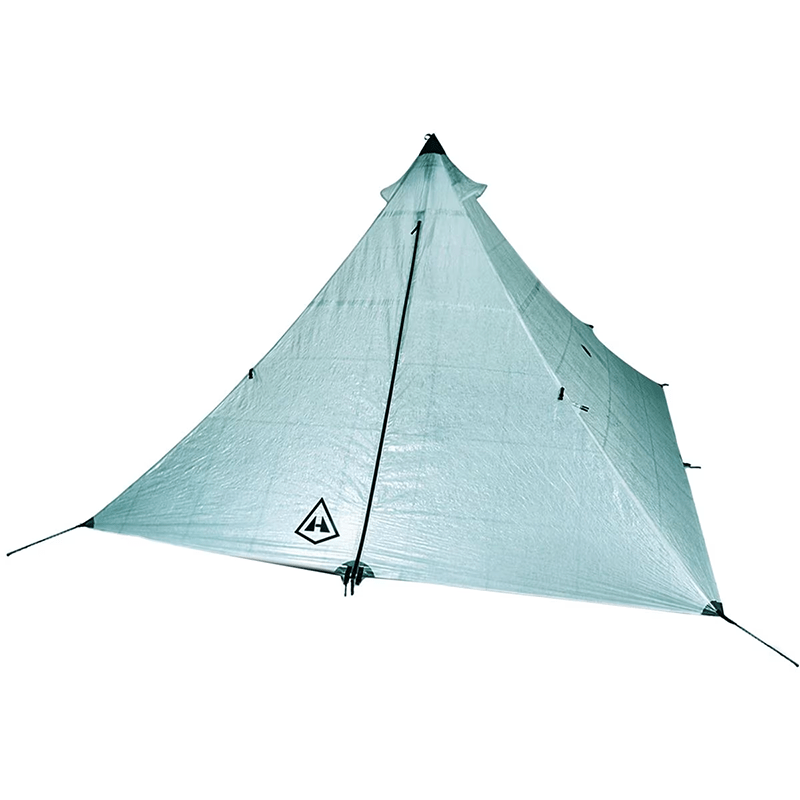
Specs:
- Floor Dimensions: 107 x 83in
- Minimum Trail Weight: 1lb 2oz
- Sleeping Capacity: 2 Person
For light and fast missions, the Hyperlite Mountain Gear Ultamid 2 single wall shelter is perfect for campers and hikers who want 4-season quality, but without the weight of a larger, heavier tent.
Hyperlite Mountain Gear designs its shelters, tarps, and tents for storm weather. This one single-wall two-wall shelter does not have a tent bottom but is incredibly resilient against inclement weather.
It’s designed to protect against nasty storms so it’s fully seam-sealed to keep moisture out.
It’s made of Dyneema Composite which keeps insects away and is resilient to keep everything inside dry and the waterproof bathtub-style base protects against stormy weather with waterproof zippers. It has vents to prevent condensation as well.
This is a great single-wall shelter as a substitute for a single-wall tent, for weight savings and is the lightest tent option on our list, weighing just over one pound.
You’ll need trekking poles to pitch this tent, so keep that in mind. All the tents we feature here do not use a tent pole to hold up the tent but also have a tent body, so weigh more.
Lighter tents are great, but save even more weight with a minimalist, weatherproof shelter instead of bulking up your bag with something more robust.
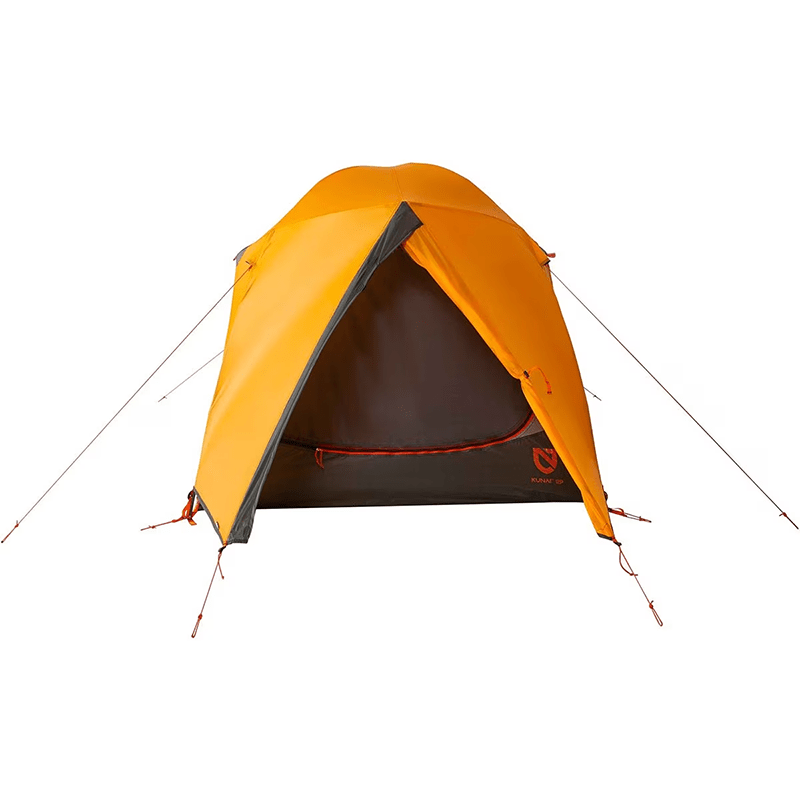
Specs:
- Floor Dimensions: 82 x 41 – 50in
- Minimum Trail Weight: 3lb 14oz
- Sleeping Capacity: 2 Person
When it comes to four-season tents, the Nemo Kunai is one of the most versatile tents for backpacking and camping year-round.
This 3-4 season tent is designed for both hot weather and cold weather. Many of the other 4-season tents are designed mostly for extreme winter conditions, so this all-around is one of the best camping tents.
It’s still an extremely lightweight tent, just over three pounds. For ultralight tents, this 4-season double wall tent provides a great balance of weight and weather protection, making it something you can use on just about any trip.
It costs quite a bit less than some of the other winter tents and double-wall tents but is durable and great for the price.
It may not have the complex well-thought-out features of the mountaineering tent, Mountain Hardwear Trango 4 Tent, but if saving money is a priority, this tent will work.
There are plenty of pockets for gear organization, a divvy sack so you can spread the weight of the tent with someone, and a large door with mesh windows for ventilation. It cuts through wind well, its poles are sturdy, and it’s very easy to set up – a great bonus if the weather is coming in.
Overall, it may be less durable against extreme wind, but compared to most winter tents, it stands up very well.
Best for Extended Trips: MSR Remote 2
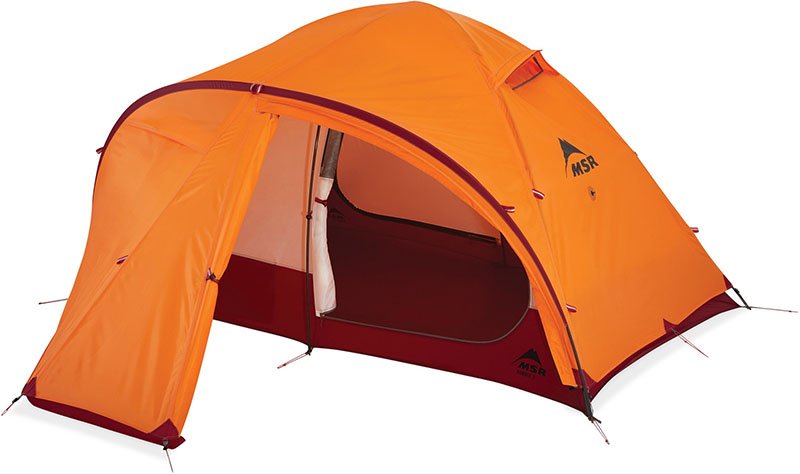
Specs:
- Floor Dimensions:: 87 x 55 inches
- Minimum Trail Weight: 6 lbs. 11 oz.
- Sleeping Capacity: 2 Person
The MSR Remote 2 tent offers the protection you need with the comfort that keeps you levelheaded for extended periods in harsh alpine or remote areas.
This tent is burly enough for expedition use but still light enough for summertime adventures or backpacking trips. It’s designed to be resilient to storms and to be easy to take down and set up. It’s a great option for backcountry ski trips.
While some of the features are less expedition-focused, the comfort aspects of this tent are where it stands out. If you want to be comfortable for weeks on end, you’re going to need the extra space, shelter, and robustness it provides.
It’s very robust and can withstand snow, is reinforced for high winds, has snow flaps, and reinforced guyout points, and is very quick to set up if bad weather is coming.
It doesn’t have as many pockets for organization, but it has a very spacious interior with extra headroom and two doors. It has a massive hooped vestibule so the tent feels very large, especially for two people.
Buyer’s Guide: How to Choose a 4-Season Tent
There are several types of 4-season tents, including expedition-style mountaineering, ski touring, and snowshoeing tents. Mountaineering tents or alpine tents are engineered for extreme conditions, prioritizing durability, weather resistance, and stability to withstand high winds, snow loads, and harsh environments.
Expedition tents are similar, built for prolonged stays in challenging environments, featuring spacious interiors, and multiple vestibules, and are designed for comfort and protection on an extended trip.
Backpacking tents are for backpackers who venture into colder climates or higher elevations, prioritizing portability while providing weather protection.
Light tents are designed for minimalist backpackers, prioritizing weight savings without sacrificing essential features, ideal for fast-and-light trips in harsh conditions.
Durability and Weather Resistance
You don’t want to get a tent that is going to blow away (literally). Make sure the tent you choose is designed for the weather you may be facing whether that is wind, snow, or high desert temperatures.
Many 4-season tents are geared toward winter conditions, so if you need a tent for both summer and winter camping, you may want to consider something like the versatile NEMO Kunai 2.
Interior Space
Single-wall tents and double-wall tents will offer different capacities for space. Single-wall shelters may have plenty of space but will compromise warmth and exposure. Examining the entry doors and space near the doors can make a difference in understanding just how much interior space you have.
Read reviews to find out how many people can comfortably fit in a space with gear. Don’t just look at the manufacturer’s suggested sleeping capacity. Check the floor space dimensions and peak height and find the size you need.
How fast you can set up your tent may mean the difference between getting caught in a snowstorm and staying cozy. Make sure you know how the tent is assembled and choose the type you won’t mind setting up in the harshest times.
Small, thoughtful features make winter camping more comfortable, like larger vestibule space, pockets, places to hang clothing inside a tent, ways to secure poles more easily, and ventilation so condensation and heat can be released. Things like the quality of the tent poles and ease of setup can be important to consider.
Frequently Asked Questions
Do I need a lightweight 4-season tent?
A lightweight 4-season tent is beneficial if you plan to camp in diverse weather conditions and you may need to hike in, ski in, or are not car camping and want to pitch in a remote area.
A lightweight 4-season tent is built to withstand weather conditions such as snow, wind, and rain but is also made to be easy to transport. This type of tent is ideal for backpackers, mountaineers, and winter campers who require reliable shelter but don’t want to add excessive weight to their gear load.
Choosing a lightweight option ensures you can navigate rugged terrain more easily and will save weight and energy for whatever adventures you are getting up to.
Can I set up a 4-season tent on snow or icy surfaces?
You can set up a 4-season tent on top of snow or ice. These tents are specifically engineered to be sturdy and stable, often with reinforced poles and robust materials to withstand snowy and icy conditions.
Properly securing the tent, using the tent stakes, and anchoring it with tent poles and pole sleeves well will ensure stability and safety when winds get high and the weather kicks in.
Can I use a 4-season tent in warm weather or in the summer?
You can use a 4-season tent in warm weather or during the summer, but many of these tents may be designed more for winter.
Check the description to see whether the tent is designed with features like mesh, extra ventilation, and flexibility in the setup so that it may be used in summer or warmer conditions.
Keep in mind that 4-season tents may offer less ventilation compared to lighter, summer-specific tents, so they might feel warmer inside. Nonetheless, they can still provide reliable shelter and protection from the elements in warmer weather.
Using a 4-season tent in warm weather may result in a hotter interior compared to other tents not specifically designed for summer use. You can mitigate heat by opening windows or vents, using lighter-colored flysheets to reflect sunlight, or camping in shaded areas to help keep the interior temperature cool.
What makes a 4-season tent different?
A 4-season tent differs from traditional tents primarily in its construction and design, as they are tailored to withstand harsh weather conditions year-round. 4-season tents are typically designed for mountaineering and winter camping.
4-season tents have a sturdier construction, usually featuring things like reinforced poles and heavier fabrics to withstand harsh winds, heavy snow loads, and other extreme weather conditions. They usually have aerodynamic shapes like domes or geodesic designs, to aid in shedding snow and resisting strong winds.
4-season tents often offer added weather protection with features such as snow flaps, extra guy lines, waterproof tent floors, and snow skirts to prevent snow and wind from entering the front tent walls. Additionally, they typically have waterproof floors to keep moisture out.
Is a 4-season tent worth it?
If you frequently camp in harsh winter environments or engage in activities like mountaineering or winter camping, a 4-season tent’s durability and weather resistance can be invaluable, making it worth the investment.
If you primarily camp in mild conditions or during the summer, a 3-season tent may suffice and could be a more cost-effective option.
Consider factors such as the typical weather conditions of your camping destinations, the duration of your trips, your budget, and your preferred activities when deciding if a 4-season tent is worth it for you.
Are 4-season tents waterproof?
4-season tents are typically designed to be waterproof. They often feature waterproof fabrics for the inner tent, body, and rainfly, as well as sealed seams to prevent water from penetrating the inner tent itself, even in light snow.
Additionally, many 4-season tents have waterproof floors to ensure that moisture does not seep through from the ground. These features help to keep campers dry and comfortable while ski touring or on winter adventures.
Choosing the best four-season tent can be tricky. There are lots of options out there, so how can you make sure that you find the best four-season tent for you?
Considering the weather you’ll need the tent for, whether you’ll be sleeping at alpine, how much space the interior has, and what kind of storage it has, are all things to think about when choosing a tent.
You want to make sure your tent is going to make you feel comfortable and be something you will use more than once. Picking a four-season tent that has options for use in summer can be a great way to get the most bang for your buck.
Our top pick for the best all-around four-season tent is the The North Face Mountain 25. This tent is tried and tested by many mountaineers and adventurers and is the best tent for the price.
It’s great in harsh weather and has a ton of extra features so it’s comfortable and makes you feel at home inside while camping in winter.
It doesn’t matter whether you are heading off into the harshest of winter or just ski touring for a weekend away, one of these four-season tents will undoubtedly be a perfect addition to your outdoor gear.
Looking for more warmth during your winter camping trips? Check out our picks for the Best Hot Tents.



